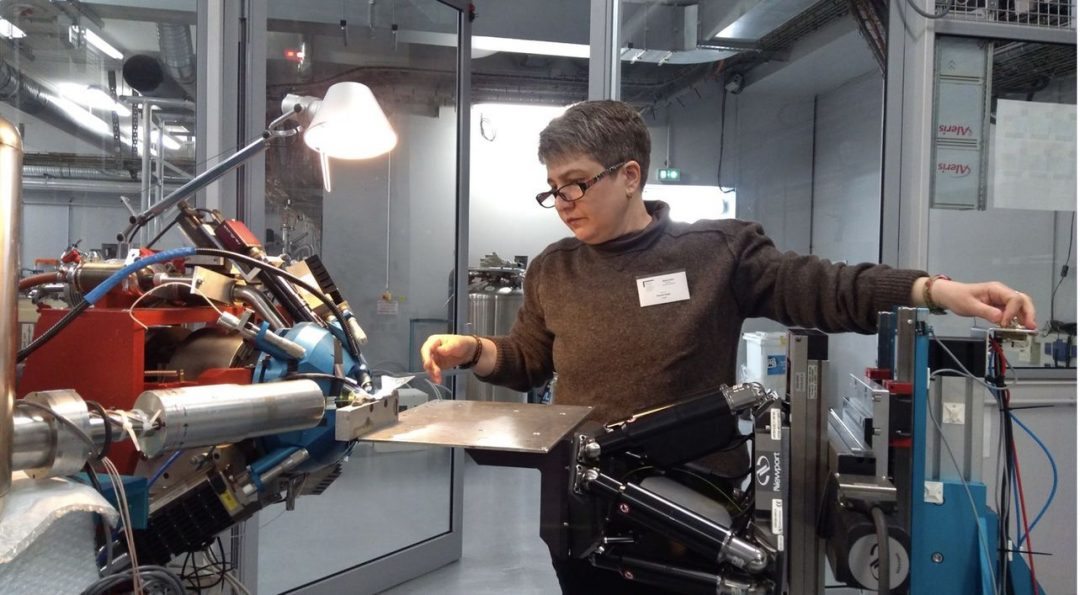User: Roxana Bugoi
ORCID: https://orcid.org/0000-0002-8247-9355
Organisation: Horia Hulubei National Institute for nuclear physics and engineering, Bucharest (RO)
Technique requested: Particle Induced X-ray Emission (PIXE)
Particle Induced Gamma-ray Emission (PIGE)
Facility: Grand Louvre Accelerator for Elemental Analysis (FR)
The aim of this IPERION HS project was to determine the chemical composition of 93 Roman glass fragments discovered at Mălăieşti, Romania, dated to the 2nd century AD using two external Ion Beam Analysis (IBA) methods – Particle-Induced X-ray Emission (PIXE) and Particle Induced Gamma-ray Emission (PIGE) – at AGLAE accelerator of C2RMF, located in the basement of the Louvre Palace, Paris, France.
The aim of this experiment was to identify the raw materials and the techniques used in the making of these archaeological glass items, in a trial of establishing the commercial patterns in this region during the Early Roman period.
The Roman fort from nowadays Mălăiești was abandoned by the Roman army at the beginning of Hadrian’s reign. Its occupation period was a very short one (102 – 118 AD). The advantage of the archaeological research at this site lies in the fact that the two enclosures identified here (the fort and the baths) had a very brief period of use; moreover, these constructions were not overlapped by other buildings.
A wide range of glass fragments from different containers – drinking vessels (beakers and goblets), jugs, bottles, unguentaria, lamps, window glass panes, had been subjected to compositional investigations.
As the experimental facilities and working procedures at the AGLAE accelerator are been continuously optimized for the compositional characterization of ancient glass finds (and other archaeological materials, too) accurate quantitative results on a relatively large number of samples can be easily obtained in just several days of beam-time – in this case, five days of beam-time. On the other hand, the results are statistically significant allowing the coherent interpretation of the analytical data – obviously, in correlation with archaeological arguments. Moreover, using the external beam set-up, samples of any shape/size can be easily analyzed without any geometric constraint.
The pristine composition of the vitreous finds was determined by measuring tiny clean, fresh, flat areas produced by wet polishing the glass with SiC papers of various grits – i.e. the proton beam hit a small facet on the surface of each glass fragment. Point measurements were made in some small zones of very thin glass samples.
The experimental parameters were the following: a 3 MeV external proton beam focused to 50 mm diameter, beam currents of approximately (1…4) nA and acquisition times of roughly 2-3 min. IBA measurements were made by scanning 500´500 mm2 areas, to obtain locally averaged values of the concentrations – though in principle glass is a homogeneous material.
The volume nearby the measurement zone was flooded with a stream of helium. For PIXE signals acquisition, four SDD detectors were used — one for low-energy X-rays (up to roughly 6 keV) and the three other for higher-energy X-rays (above 6 keV). Aluminium filters (50 mm thick) were put on top of each SDD detector used for trace-elements detection. A HPGe detector was employed to measure the proton-induced gamma rays; in particular, it was used for the quantification of the 440 keV gamma-ray emitted by the 23Na nuclei.
Several glass standards (Brill A, Brill B, Brill C, Brill D, BGIRA 3, BGIRA 4, BAM-S005, NIST 611) were used for the calibration of the PIGE data, as well as to check the accuracy of the results.
PIXE quantitative data were obtained by running TRAUPIXE software based on GUPIXWIN engine, assuming that targets were thick and homogeneous and that all the detected elements (except for Cl), namely: Na, Mg, Al, Si, P, S, Cl, K, Ca, Ti, V, Cr, Mn, Fe, Co, Ni, Cu, Zn, As, Br, Rb, Sr, Zr, Sn, Sb, Ba, Pb, were in present in the recipe as oxides in the upper oxidation state.
All fragments turned out to have a soda-lime-silica matrix with compositions characteristic for Roman glass. Considering the low MgO and K2O contents (< 1.5 wt%) of most fragments, one can conclude that natron was the flux used in their making. Some samples contain MgO ~ 2 wt%, suggesting a possible plant ash component. No lead or potash glasses were identified in the studied assemblage. Most samples were identified as made of naturally colored blue green yellow Roman glass, typical for the Early Roman period.
As concerning the colorless glass fragments, their remarkable transparency and lack of color were produced by the addition of antimony compounds to the glass batch, in agreement with their dating. Manganese compounds were just occasionally used as decolorizers.
Cobalt was identified as the chromophore in several blue glass fragments.
For several glass samples, modern fracture surfaces were available, produced as several shards broke during the excavation or the sample preparation. Measurements on both SiC polished areas and on the modern fracture were performed and in most cases, the quantitative results turned out to be comparable – a further indication that the cleaning of the weathering products is absolutely necessary in order to obtain accurate quantitative results when analyzing ancient/archaeological glass.
A careful interpretation of the obtained results will be made by taking into account the typology of the vessels from which the analyzed fragments derived, the chronological assignation of the artefacts, as well as the analytical data on similar vitreous finds dated to the Early Roman period.
Mălăieşti glass finds will be attributed to some well-established types of Roman glass from the archaeometric literature. Comparison with coeval Roman artefacts discovered in nearby geographical zones will be also made; correlations between the shape of the vessels and the chemical composition will be also sought. In the end, IBA results will be used to get clues about the glass provenance, distribution patterns and trade routes. Through this project, we expect to obtain some conclusions about the glass consumption in this region and on the commercial exchanges during the Early Roman period.

